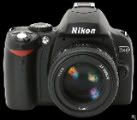Demonoid Invitation Code
Since TV shows are not allowed in mininova, people would start finding new torrent sites which provide one. Piratebay and Demonoid still hosts TV shows. For this I would like to give out invitation codes for Demonoid. :) I will be giving out 5 invitation codes to the lucky commenters to be drawn at June 1. Start commenting guys.
Colored Subject with Monochrome Background
Having a colored subject with a monochrome background is relatively easy to do. This post-process editing would help focus more on your main subject by highlight it. Otherwise, othe reasons to use this kind of editing is for artistic purposes. Here's a step-by-step guide on Photoshop on how to do it (I use Photoshop CS4 Micro):
1. Open up your photoshop.
2. Open the file you want to edit via File>Open
3. Duplicate the Background Layer (Ctrl + J)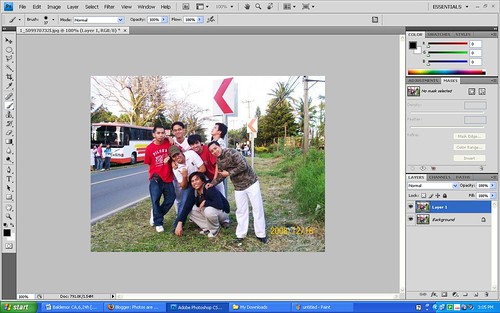
4. Make the Background Layer Monochrome(Ctrl + Shift + U)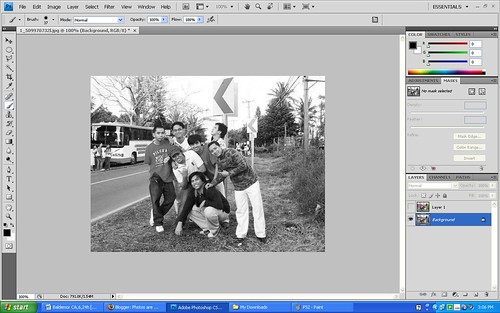
5. Make a mask layer for Layer 1. Select the mask layer.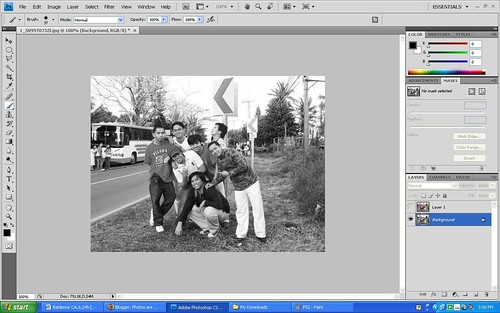
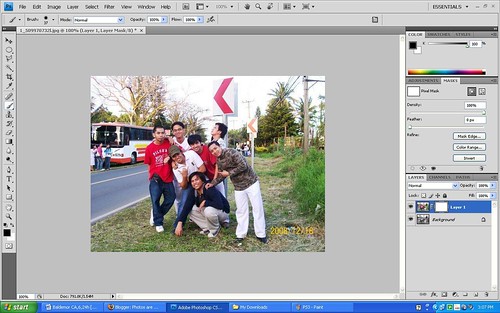
6. Select the Brush tool and make the foreground color black (This erases the pictures while the white foreground paints). Only erase the areas that you want to be monochrome, in this case, the background. For easier visualizations, tick the eye button beside the Monochrome background layer.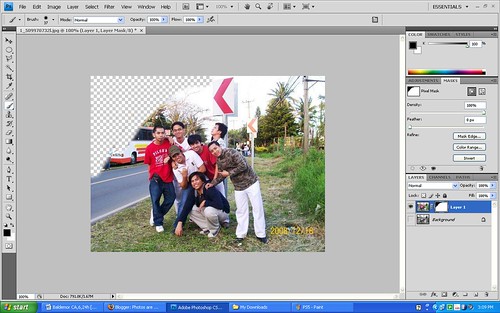
7. After being satisfied with your work. Tick the eye button again beside the Monochrome background layer to reveal your background. After that, you're finished. :) There you go!
Here are some of the pics i've done.



Taking Photos at Night
Taking night photos is an exciting endeavor, especially when you are looking for great landscape shots of night lights and cities. Here are some tips on how to take photos at night:
1: Switch your camera to Manual mode by turning the mode dial to ‘M’.
2: Choose the smallest f-number available and a relatively long shutter speed to record the lights. One second is a good starting point and most cameras indicate seconds using double quotes, so look for 1”.
3: Keep your camera very steady. Preferably use a tripod or a Gorillapod. Use the self-timer to avoid wobbling the camera as you press the button.
4: Check your photo. If the lights aren’t bright enough, try a slower shutter speed. If the lights are too bright, try a quicker shutter speed.
5: After taking your photo, remember to set the mode dial back to Auto or Program mode.
Watch out!
Always temporarily switch off any anti-shake or image stabilisation systems when using a tripod. If the camera is perfectly steady these systems can actually introduce wobbling as they attempt to counteract something which isn’t there.
Some cameras will also have difficulty focusing in dark conditions, so if yours is having problems, switch the lens to manual and focus on the lights. If they are distant, focus the lens to infinity.
Another way to maximise available light is to increase your camera’s sensitivity by using a bigger ISO number. Increasing the sensitivity will however reduce your picture quality and may still not give you a quick enough exposure to handhold. So stick to using a tripod and a low ISO number for the best quality.
There you go! Enjoy taking photos! :)
How to Take Sunsets/Sunrise Photos
It's summertime already! I bet a lot of you would want to hit the beaches and take photos of great sunrises or sunsets within the distant horizon. However, most of the time, these photos would look faded or washed out when taken in automatic mode. Here are some tips on how to take them:
1: Switch your camera to Program mode by turning the mode dial to ‘P’.
2: Press the exposure compensation button. This is normally labelled with a plus and minus symbol – check your manual for details.
3: Set the compensation to a negative value to deliberately underexpose the shot – a setting of -1 is a good starting point. Some DSLRs require that the compensation button be held as you make this adjustment.
4: If the result is still too bright, choose a bigger number, like -1.5 or even -2. If the result is too dark, choose a smaller number like -0.5 or -0.3.
5: After taking your photo, set the compensation back to zero or all your photos will be darker than normal. Finally if desired, set the mode dial back to Auto.
Expert tip
There you go! :) Take those sunsets like there's no tomorrow. :) Good luck on your vacation!
Manila Zoo 4/3/09
Last friday, Chi and I decided the take a tour at the Manila Zoo. It was just for fun. Tickets cost P40 ($0.80) for non-Manilans and P20 ($0.40) for Manilans. Of course being students of PLM, we got the P20 worth tickets. :) Not that many animals to see compared to Avilon Zoo, but it is still enjoyable. :) Here are some pics during the tour. Enjoy. These were taken by my Sony Ericsson S700i.
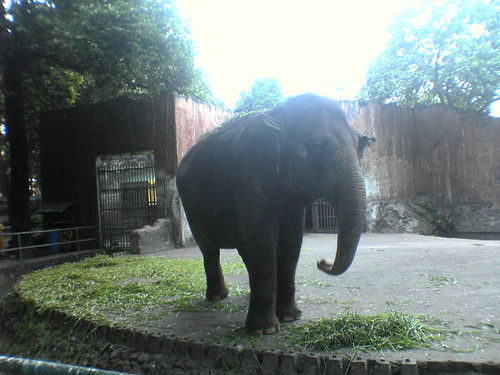 Dumbo
Dumbo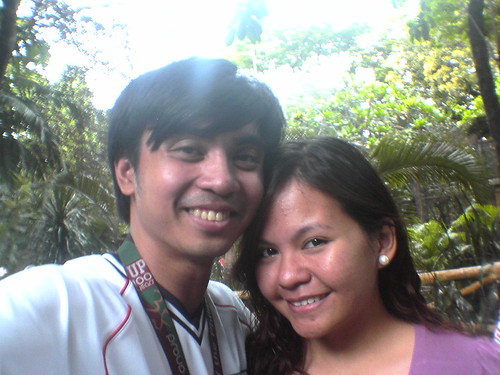 Me and Chi
Me and Chi Me and Chi with a Hippo at the back
Me and Chi with a Hippo at the back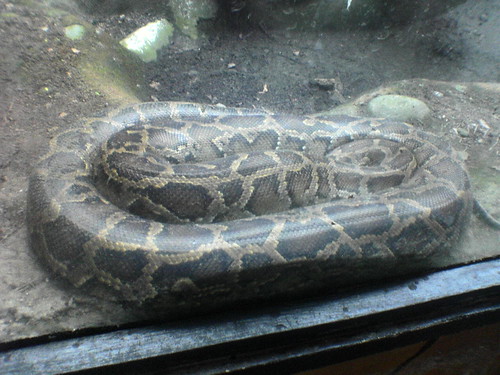 Hisss!!
Hisss!! Iguana
Iguana TMNTs
TMNTs Love this pic of the Hippo! LOL! So fat and chubby!
Love this pic of the Hippo! LOL! So fat and chubby!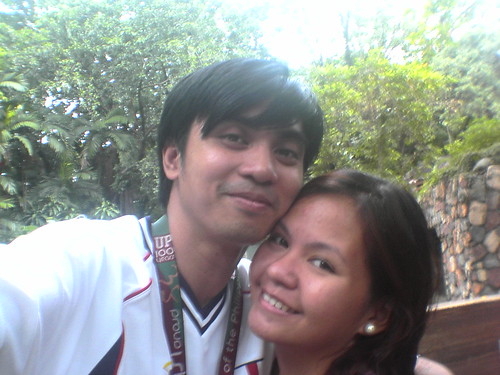 Enjoying it!
Enjoying it!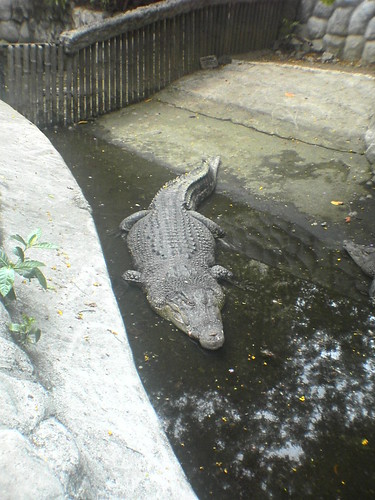 Reminds me of the Croc Hunter
Reminds me of the Croc Hunter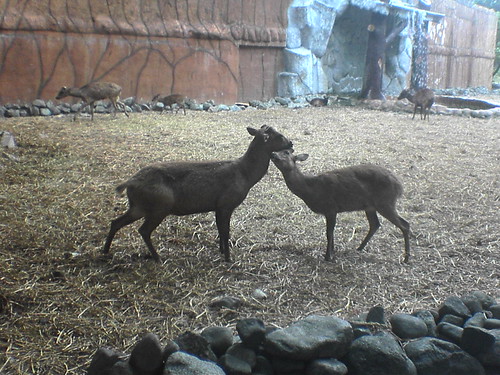 Now this reminds me of a classic cartoon movie
Now this reminds me of a classic cartoon movie Now this reminds me of Madagascar
Now this reminds me of Madagascar A magnificent bird!
A magnificent bird!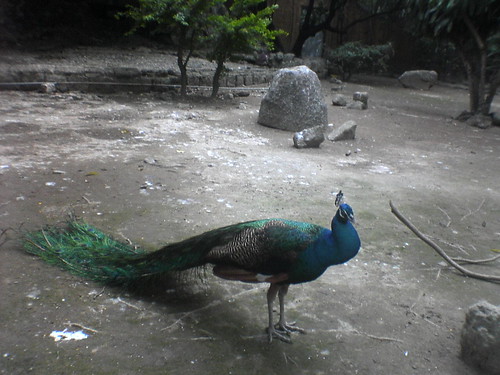 Very vibrant colors!
Very vibrant colors!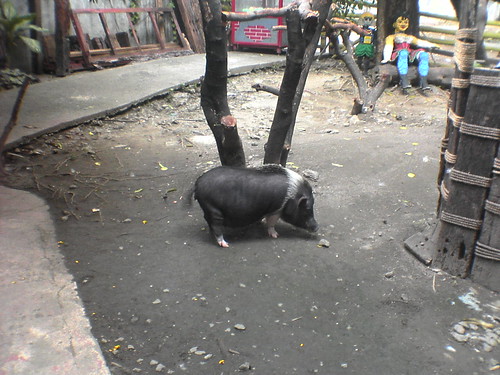 Our favorite animal in the zoo. SO chubby!!!
Our favorite animal in the zoo. SO chubby!!!The Nikon D60
 Like the Nikon D40 and D40x, the Nikon D60 is an entry-level DSLR. It features a 10.2 megapixel CCD sensor and a 2.5 in screen along with the same body and controls as the Nikon D40x. So what is new with the Nikon D60?
Like the Nikon D40 and D40x, the Nikon D60 is an entry-level DSLR. It features a 10.2 megapixel CCD sensor and a 2.5 in screen along with the same body and controls as the Nikon D40x. So what is new with the Nikon D60?
The great thing about buying the Nikon D60 is that you can purchase it with a Nikkor DX 18-55mm VR lens which features vibration reduction facilities. Also new to the D60 are eye sensors which switch the screen off when you're looking through the viewfinder, a stop-motion recording mode, Active D-Lighting and an anti-dust system. We'll talk about them one by one.
Unlike the Nikon D40x, the Nikon D60 has eye sensors which detect when you are looking through the viewfinder. This will close or open the LCD screen in your camera which will save you battery life. Furthermore, the LCD screen can now rotate as you rotate your camera to shoot portraits or landscape photos.
The stop-motion feature of the D60 allows you to make clips from your images. You can adjust the frame rate and the resolution of the movie. This feature is somewhat limited in the sense that you can only make a 100-image movie. This severely limits what you can do with the D60 when it comes to making clips (it IS a camera and not a camcorder).
Active D-lighting is another new feature for this entry-level camera which can be used to preserve details of your images (e.g. shadows, washed out images, etc). It is a feature borrowed from Nikon's higher end DSLRs. Its pretty useful for beginners and advanced users alike.
Lastly is the anti-dust facility. There are two ways in which this camera combats dust: it can vibrate the filter in front of the sensor in order to shake of the dust and a brand new airflow system. The airflow system exploits the air pressure within the DSLR to flush the dust out through the air ducts within the lens mount. Pretty useful eh?
Looking for cheap Nikon D60 prices? Its in here. Or you can buy one through Amazon.com.
Other features (from NikonUSA.com) of the Nikon D60 are:
- Extraordinary 10.2-Megapixel DX-format Nikon Picture Quality: Nikon's high-performance, 10.2-megapixel DX-format CCD imaging sensor and exclusive EXPEED image processing concept provide added cropping freedom and the ability to make larger prints.
- Includes AF-S DX NIKKOR 18-55mm f/3.5-5.6G VR (Vibration Reduction) Image Stabilization Lens: NIKKOR lenses are famous for breathtaking sharpness and faithful color. With Nikon's fast, accurate autofocus and Vibration Reduction (VR) image stabilization technology built in, pictures are even sharper, free from blur caused by camera shake when shooting hand-held.
- Fast Startup and Split-Second Shutter Response: With fast startup and split-second shutter response, the D60 eliminates the frustration of shutter delay, capturing moments that other cameras miss.
- Shoot Continuously at up to 3 Frames per Second: Capture sports action, precious moments and fleeting expressions at up to 3 frames per second, for as many as 100 consecutive JPEG images.
- Active Dust Reduction System with Airflow Control: Nikon's Active Dust Reduction System activates automatically, along with Airflow Control technology to reduce the amount of dust that reaches the sensor.
- Easy Operation with Intuitive Controls: Intuitive controls and an onboard HELP Menu System with Assist Images make the D60 truly easy to use, enabling everyone to capture beautiful memories perfectly.
- Nikon's EXPEED Image Processing Concept: Nikon's original digital image processing concept, EXPEED, comprehensively optimizes pictures, shot after shot.
- 8 Digital-Vari Program Automatic Shooting Modes: Eight Digital Vari-Program Modes include: Auto, Auto Flash-OFF, Portrait, Landscape, Child, Sports, Close Up and Night Portrait; each of which adjusts automatically for optimal results for everyday shooting situations. Each mode considers lighting conditions and possibilities, aperture, shutter speed, white balance, hue, tone, sharpening and more to make creative photography as simple as rotating the mode dial.
- Nikon's Smallest Digital SLR Ever! Beautifully styled, the D60 makes high-performance digital SLR photography easier and more convenient than ever. You'll be amazed at the power packed into a camera that weighs just over 16 ounces.
- 2.5-Inch, 230,000-Dot Color LCD Monitor with 170-Degree Wide-Angle Viewing: Playback images are easy to see and function menus are easier to use with a larger and brighter color LCD monitor. The large 2.5-inch LCD monitor enables image preview at up to 19 times magnification and has large type fonts with easy-to-view menus. Auto rotating LCD display provides automatic horizontal and vertical graphic display orientation.
- Advanced HELP Menu System with Assist Images: The D60's Assist Images help you select the appropriate settings for many camera features by showing an example image typical of that setting, as well as an advanced HELP Menu for the current item selected. The D60's Question Mark icon (?) indicates that help is available for the currently selected item; just press the HELP button beside the LCD monitor to see a context-sensitive HELP page.
- Nikon 3D Color Matrix Metering II: The D60's 3D Color Matrix Metering II evaluates each scene for brightness, color, contrast, size and position of shadows and highlights, selected focus area and camera-to-subject distance, comparing that information against an onboard database of more than 30,000 actual photographic scenes. The result delivers instantly and precisely determined exposures for each scene, even in challenging lighting conditions.
- Image Optimization Options: The D60's Optimize Image setting lets photographers adjust color, contrast and sharpening, as well as other image settings, according to the type of scene or output desired. Settings include: Normal, Softer, Vivid, More Vivid, Portrait, Custom and Black and White, each of which are automatically adjusted based on sophisticated Nikon algorithms or user-selected settings for optimum results.
- Built-in Speedlight with i-TTL Automatic Flash Control: Nikon's innovative i-TTL flash control evaluates flash exposure with incredible precision to achieve better automatic flash balance and deliver outstanding results. The built-in Speedlight is always ready to bring beautiful exposures to darkened conditions, as well as add sparkle for fill flash in outdoor situations for enhanced twilight shots or an added impact to daylight images. In low-light or back-light situations, added illumination from the built-in Speedlight can make the difference between an average snapshot and a dazzling picture.
- Fast, Accurate 3-Area Autofocus: The D60's advanced 3-Area AF system and the refined algorithms inherited from more advanced Nikon digital SLR cameras deliver fast, efficient and precise Autofocus. AF refinements deliver greater precision with fast, more consistent subject acquisition and improved focus tracking for consistently sharper pictures.
- In-Camera Image Editing and Enhanced Retouch Menu: Highly versatile in-camera editing features through the Retouch Menu include Nikon D-Lighting, Red-Eye Correction, Image Trim, Image Overlay, Monochrome (Black and White, Sepia and Cyanotype) along with Skylight, Warm Tone and Color Balance filter effects. New effects and controls include Quick Retouch, NEF (RAW) Processing, Cross Star and Color Intensifier filters. This provides greater creative freedom without the need for a computer for those who prefer to send pictures directly to a printer.
Stop motion video: Creates a stop-motion animation from a sequence of images for added creative fun to your pictures.
Up to 500 Images per Battery Charge: The supplied EN-EL9 rechargeable battery will allow for shooting up to 500 images per charge based on CIPA battery testing standards.
- Supplied accessories (may differ by country or area): EN-EL9 Rechargeable Li-ion Battery, MH-23 Quick Charger, UC-E4 USB Cable, DK-20 Rubber Eyecup, AN-DC1 Camera Strap, BF-1A Body Cap , DK-5 Eyepiece Cap, BS-1 Accessory Shoe Cover, Software Suite CD-ROM
Deciphering Camera Terms Series: Shutter Speed
After discussing about ISO, we'll be discussing about SHUTTER SPEED.
SHUTTER SPEED
Shutter speed is simply a measure of how long the shutter stays open when you take your picture. Automatic cameras can handle this adjustment for you, but there are cases in which you’ll wish to use the shutter priority function of your camera. These are particularly useful when taking pictures of fast moving objects or taking a shot at very low lighting.
In practice, low shutter speeds are used together with high ISO settings in instances wherein there is very low lighting conditions. Low shutter speeds are also used when taking pictures of objects that are moving with a blurred background. They are also useful in depicting "moving" pictures of waterfalls or rivers. The only downside is that an image shot using a low shutter speed is prone to camera shakes. Better use a tripod in these situations.
High shutter speeds are for moving objects also, but with a relatively still background. They can also be used when shooting in places with appropriate lighting. Furthermore, a high shutter speed would help avoid camera shakes when taking a photo.
That is all for SHUTTER SPEED. Next time, I'll be discussing about EXPOSURE COMPENSATION.
Deciphering Camera Terms Series: ISO
After discussing about FOCAL LENGTH, we'll now be discussing ISO. So what exactly is ISO?
ISO
ISO is the measurement of how sensitive a digital camera's sensor is to light. These are represented by ISO numbers (e.g. 50, 100 - 6,400). A higher ISO number would mean a higher sensitivity to light while lowering it would mean the opposite. So how important is the ISO setting?
Higher ISO numbers indicate a higher sensitivity to light, so less time is needed to expose a picture. Most digital cameras let you control the ISO setting to allow the use of higher shutter speeds and/or smaller apertures, according to circumstances.
In practice, high ISO settings can be used when you have plenty of light and you need a fast shutter speed to stop action. The fast shutter speed can help you capture a sharp image even when you don’t have a tripod. The faster that shutter clicks, the less time you have to move the lens and blur the picture. You would have an ISO of 200 and above to achieve this.
In contrast, inside shots without flash will need a lower ISO setting. Perhaps you want to catch a moody shot of people sitting together in candlelight at a dinner. That setting doesn’t produce enough light to register on the sensor unless you require the subjects to sit there for a few minutes. Even then, the saturation of the film can break down (meaning the colors will look weird), so you need to use a low ISO setting with a longer shutter speed, one that will register an image with very little light(perhaps an ISO of 50).
That is all for ISO, next time we'll be tackling about SHUTTER SPEED.
My BlogLog
My Blog List
-
Slimming down has never been this easy!12 years ago
-
Labels
- aperture (1)
- baby (1)
- banini (1)
- beach (1)
- camera (3)
- clerkship (1)
- color isolation (1)
- CS4 micro (1)
- demonoid (1)
- depth of field (1)
- dolphins (1)
- DSLR (13)
- events (1)
- family (1)
- focal length (1)
- grad pic (1)
- graduation (1)
- Hidalgo (2)
- hospital (1)
- how to (10)
- invitation (1)
- ISO (1)
- jollibee (1)
- lens (1)
- Mayer's (1)
- movie (1)
- movie reviews (1)
- night photography (1)
- Nikon (3)
- Nikon D200 (1)
- Nikon D40 (3)
- Nikon D60 (1)
- Ocean Adventure (1)
- ospital ng maynila (1)
- philippines (1)
- photography (19)
- photoshop (1)
- prices (1)
- quiapo day (1)
- review (1)
- Shops (1)
- shutter speed (1)
- sony ericsson (3)
- Subic (1)
- summer (1)
- sunrise (1)
- sunset (1)
- tripod (1)
- tutorial (9)
- vacation (2)
- Zambales (1)
- Zoo (1)


